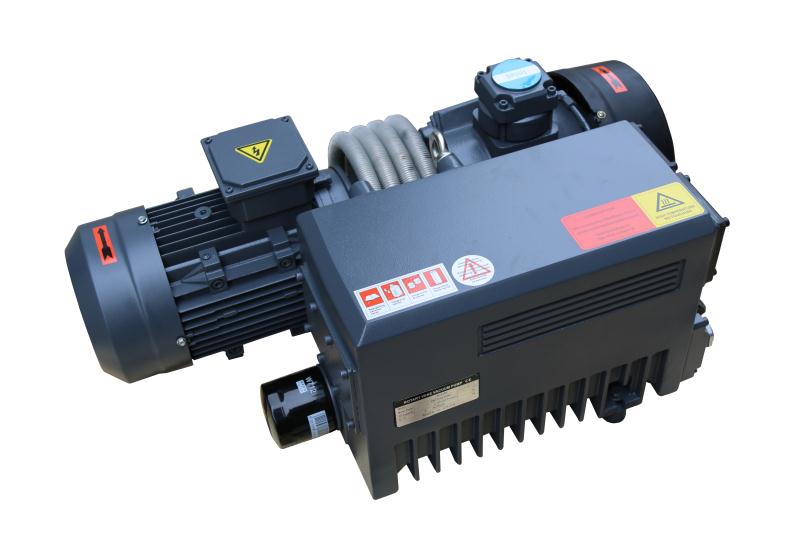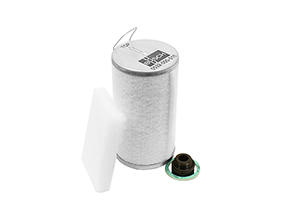Rotary Vacuum Pump Application
rotary vane vacuum pump correct application:
Before application, the product specification should be read carefully, and the quality of shipment should be checked after opening the case. Receive spare parts and technical documents and remove exhaust protective parts. According to the request device, wiring, trial steering. The water pump is connected to the water.
In order to avoid fuel injection due to oil return and reversal, the pump mouth should be opened first, and the oil in pump should be transferred to the tank by hand tray according to the rules. At the same time, check the oil level, should be above the center of the oil standard, but not full of the oil standard, more to release.
Auxiliary method to distinguish steering. Put the sheath upside down on the pump mouth, if it is absorbed after opening the pump, it is positive, blown off and reverse. The normal sound is positive, and the abnormal sound is reverse.
If a pneumatic solenoid valve is installed at the pump mouth, it should be installed horizontally and operated simultaneously with the pump.
When the relative humidity is high or the condensable vapour such as water vapour in the extracted gas is high, the gas ballast valve should be used.
Vacuum pump oil is recommended according to the specification. Note that ester vacuum pump oil can not be mixed with mineral oil type vacuum pump oil and other oils. It must be cleaned strictly before it is replaced with ester vacuum pump oil.
The limit pressure of the pump shall be checked by a compact mercury vacuum gauge. Full pressure gauge should pay attention to pairing calibration and standby comparison of gauge and regulation. It is advocated to install a ball valve between the regulator and the pump under test. Closing the valve at unexpected time can prolong the operation time of the regulation.
rotary vane vacuum pump maintenance
1. we should understand the type, characteristics and current situation of the pump. Understand the application request and affirm the purpose of repair. Be ready to test the wrist before stopping maintenance.
2. Discriminate and diagnose faults. It is easy to distinguish. The diagnosis needs to be verified.
3. To clean up the defects, we should first simplify them and then multiply them. No disassembly is required. In order to reduce the new damage caused by the shortage of special tools and improper operation, reduce the change of position and running-in time. Generally speaking, the spliced rotor is not removable, otherwise the shape and position tolerance will not be guaranteed, and the rotor will be scrapped.
4. For poisonous, harmful and corrosive pumps, users should be asked to clean them first and inform the necessary protective measures to ensure the health of maintenance personnel.
5. Classification of defects
It is advocated that defects should be classified into operation defects and performance defects.
Operating faults may include non-rotating pump, high pump temperature, oil leakage, water leakage, maximum power exceeding the standard, etc.
Performance faults may include unsatisfactory or unsatisfactory performance of limit pressure, limit full pressure, pumping efficiency, noise, fuel injection, gas column, etc.
6. Examples of Differentiation and Diagnosis of Faults
6.1 the pump does not turn. If the condition is unknown, the pump should not be turned on in order to avoid aggravating the problem. Hand can and can’t move.
6.1.1 Pump can turn without turning. Causes can be coupling faults; belt slippage; motor wiring errors; motor damage; power failure, etc.
6.1.2 can not be coiled or coiled up very heavy, the reason can be because the starting pump temperature is too low, the pump oil viscosity is too high; the design and manufacturing reasons for the shutdown of pumps return too much oil. Too much oil is returned from pump shutdown caused by too high oil level (too much oil, or condensation of water vapor in the pump, or condensation of water flow in the exhaust pipe); foreign matter is in the pump (welding slag and oxide in the intake pipe; screw spring and other pump parts debris); screw deformation is stuck; occlusion occurs (copper sleeve, rotor, middle wall, pump cover, stator). Bearing, bearing.
6.2 the pump temperature is too high. Refers to the maximum oil temperature measured near the left of the low-grade exhaust valve exceeding the application specification rule value. As the pump temperature rises, the viscosity of the pump oil will drop dramatically, and the saturated vapor pressure of the pump oil will rise, so that the limit pressure of the pump will rise and the pumping efficiency will fall; the rubber parts will be easy to aging; the heat shrinkage will reduce the operating clearance, especially the thickness direction of some non-metallic rotors and the clearance of the copper sleeve inner hole, which will affect the reliability of the pump operation. 。 The reason for the high pump temperature is that the ambient temperature of the pump is too high, the intake temperature is too high, the intake cooling installation is invalid, the intake pressure of the pump is too high for long-term continuous operation, the cooling water quantity of the water-cooled pump is insufficient, the design effect of circulating water is not good, and the temperature control water regulating valve is invalid.
6.3 oil leakage. It can occur on the sealing surface of shaft seal, oil tank and pump parts, oil discharge plug, oil mark, oil hole stuffing head, through hole connection between stator parts and support, gas ballast valve (e.g. 2X-8). It can be caused by aging of seals, improper installation, damage and failure, uneven appearance, impurities, rough and loose casting, etc. If the oil returns after shutdown, the oil will enter the air ballast valve. If the air ballast valve is not closed, the oil may leak. When making a self-made rubber pad, oil-resistant rubber must be used. According to the original design shape, if the sealing surface is too large, the oil will leak if the pressure is not tight.
6.4 Water leakage can occur in water pipe joints, water jacket cover plane, water outlet plug, water valve and other places, water jacket drilling, casting defects, freezing cracks, may also cause water leakage.
6.5 High power exceeded the standard. It can be caused by too high inlet pressure, too high exhaust pressure, incidental occlusion of impurities, too high pump temperature, too small screw clearance, too high voltage, too much pump fluid back into the pump, etc., which will damage the motor. We should try our best to prevent continuous operation in the near and long term of maximum power. If there is accumulation on the surface, it should be removed regularly.
6.6 Limit pressure is not up to standard.
It can be caused by leakage, internal leakage, oil hole infarction, poor quality of pump oil or pollution degeneration, condensable substances such as water vapor, instrument distortion, abnormal operation of pump, etc.
White steam can be seen at the exhaust outlet when there is more leakage. There are many bubbles at the oil mark. The hand can feel the exhaust pressure on the exhaust port. There are many bubbles on the oil surface at the lower exhaust valve. Power will increase. At this time, first check whether the air ballast valve has been closed. Because each new pump is testing the limit pressure at the pump outlet, if there is leakage, the pump outlet and pipeline, valve and container should be inspected one by one. Outer shaft seal failure, oil cup no oil, oil hole stuffy head leakage can also form leakage. The internal leakage can be caused by the movement clearance in the pump, the plane of the exhaust valve seat, the sealing surface of the exhaust valve, the inner shaft seal, the plane of the pump cover, the intake pipe and the sealing parts of the gas ballast valve, etc. Wear, corrosion and occlusion will increase the operating clearance. When the oil hole is blocked, the noise of the pump will be lighter when the oil hole is opened. Under the condition of good sealing of the oil tank, if the hand is sucked on the exhaust port, the exhaust valve may fail.
(The article comes from the Internet. If reprinting is not allowed, please contact our company to delete it.)



